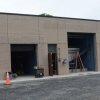Scientists say dredging could hurt fish, crabs
Environmentalists say a U.S. Army Corps of Engineers project to deepen the Delaware River channel will hurt horseshoe crabs, but the corps says part of the project will enhance a crab spawning ground.
Glenn Gauvry, president of the Ecological Research & Development Group Inc., said it would be impossible to alter deeper areas of the bay, where horseshoe crabs spend most of their time, without affecting the crustaceans.
He said the question is to what degree changes to the bay will affect the crab population. “In truth, no one can say with any degree of certainty, but there will be an effect, and it would be logical to assume that this effect will not be positive, at least not in the short term,” Gauvry said.
The Delaware Bay is an important stopover for birds, notably the threatened red knot, which migrates north each spring. The birds feast on horseshoe crab eggs, which provide them energy for the next leg of their journey.
Lewes resident Ron Kernehan said the project could harm spawning and nursery grounds vital to a variety of fish and crabs, including the federally endangered shortnosed sturgeon and the Delaware-endangered Atlantic sturgeon. In 1979, Kernehan, aquatic life consultant for Cape Henlopen State Park’s Nature Center, co-authored a book on more than 120 species of fish in the Delaware River and Bay.
All those animals use the area the corps plans to dredge for spawning or nursery, Kernehan said.
Kernehan, who also volunteers with the Marine Education, Research & Rehabilitation Institute, and said four species of sea turtles reside in the Delaware Bay, and could be injured by dredging. While dredge ships use screens to deflect large animals, they can harm juvenile fish and by entrainment and impingement, Kernehan said.
Entrainment occurs when the fish are pulled through a system, such as a dredge pipe, and killed; impingement means fish are stuck against a screen.
“This is the sort of stuff that needs to be looked at, and I don’t think it’s been looked at well at all,” he said.
He said horseshoe crabs live in water less than 75 feet deep. The corps wants to deepen the river’s shipping channel from 40 feet to 45 feet, so the very nature of the project will affect them, said Kernehan.
Ed Voigt, corps spokesman, said part of the deepening project includes enhancing spawning grounds for horseshoe crabs at Kelly Island, but details of the plan were unavailable at press time. While the corps plans to use equipment that protects turtles from the dredge cutterheads, no specific strategy has been announced to protect horseshoe crabs during dredging.












































